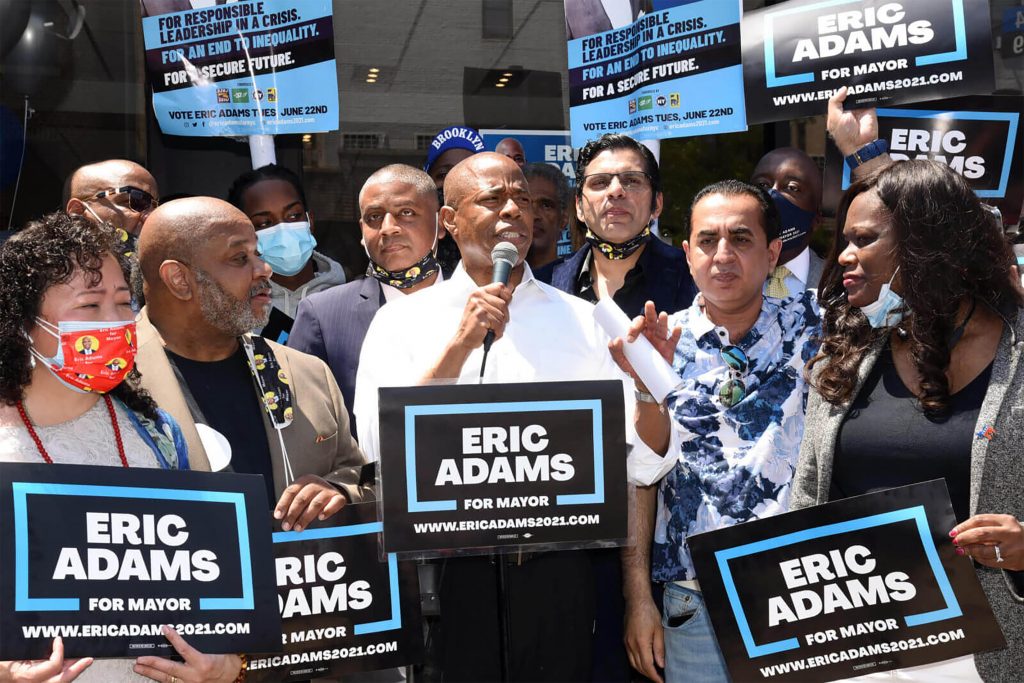In a tense and messy Democratic primary, Eric Adams came out victorious, beating Kathryn Garcia, who was in second place, by 8,426 votes. Now, Adams is entering the mayoral election, with odds saying that he will come out the victor. With such a presumption, it is important to be aware of the many changes that an Adams administration will bring to New York City, be it in healthcare, education or other sectors.
One of Adams main goals is to have New York agencies come together via a seamless platform (named MyCity) to bring ease of access to city services and benefits. Rather than have complex paperwork to fill out, Adams hopes to have a platform that will help sign New Yorkers up to programs with the click of a button. An ambitious goal indeed, but if accomplished the number of New Yorkers gaining benefits will increase.
To maintain agency integrity Adams will also establish a real-time score for their individual performance. This can help push agencies to improve themselves, be it through new practices or general performance, to not be left in the tracks of other agencies. The expectancy is that New Yorkers will benefit from improvements without much work. With this idea in mind, of low effort and high efficiency, Adams will appoint an efficiency Czar to make sure that efficiency is maintained in the New York agency system.
Of course, with the damages covid-19 has done to our citizens and economy, Adams has proposed striking reforms. Due to the lack of coordination in the health system, he hopes to create a unified citywide hospitals network. Together, New York hospitals will coordinate care for patients and share data for the improved allocation of resources.
In conjunction, with this initiative, Adams hopes to decrease hospital costs. Firstly, providers will be required to have greater transparency for the costs of healthcare. He wants to bring unions together to collectively bargain for standardized prices. But, physical health is not his only concern, as Adam’s administration hopes to expand Fountain House to provide more residential rehabilitation services.
As previously mentioned, Adams has strong plans for invigorating the local economy. One of his more intriguing proposals is the “Tax-Free Tuesday”, which would create a weekly sales tax holiday, on products/services that are oftentimes bought in person. The hope is for local businesses to become financially fit, allowing for the possibility of more jobs or increased purchasing.
Another proposal is to have New York City provide “back office” assistance such that small business owners can focus on growing their business rather than on administrative tasks. There are also many other plans in play to provide relief to restaurants and to expand the earned income tax credit.
His economic plans don’t stop there, as an Adams administration has lofty goals of making New York City the “hub of the eastern seaboard”. Now, there is work being done to establish wind turbines, and Adams hopes for a new STEM pipeline to bring innovative workers to the forefront of this initiative. With this hope of increasing renewable energy, a new and improved electric grid will be needed, and Adam’s is quite aware of this fact. In hopes of pushing the cogs towards a climate friendly city, Adam’s will gradually move power from natural gas to wind and create better trafficking laws to decrease pollution.
Adam’s also has plans for directly improving the lives of citizens. As workers have departed from New York’s offices, many buildings have become underused. So, Adams wants to convert some of these offices into affordable housing. With this same idea, he hopes for private office buildings and hotels to be allowed to convert to housing accommodations. In addition, his administration will partner with faith-based organizations to leverage development rights for the public.
In the debates, one of the most contested topics was police reform, and many ideas were thrown about. Adams, as a former police officer, had many key insights, which he will bring to the mayoral office. A main goal is to increase diversity within the police force, and a portion of these officers will be recruited for the communities that they are from. Adam’s hopes that bias and brutality may be curbed through this methodology.
There will also be a greater accountability of police officers, as problematic behavior will be publicized. And, whistleblowers within the force will be given greater opportunity to report the so called bad apples.
Most importantly, however, Adam’s precincts can serve as community centers, with public internet and programs for residents. ‘
New York City is at a great juncture between success and failure, thus a strong reformative leader is necessary. Adam’s appears to be heeding this call, as his administration hopes to reinvent New York City for all cultures and communities.
The Harlem Times 100 Point Plan Review
Over the coming weeks, The Harlem Times will be review each point in one minute videos to highlight pros and cons of each program in the Adams administration. To get read his plan ahead of time, you can click here.

